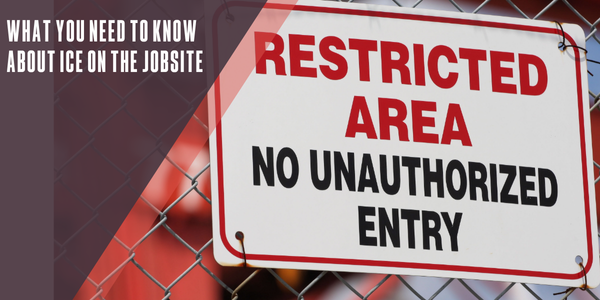Families First Coronavirus Response Act

By Jacqueline N. Feliciano, Cotney Construction Law.
Understanding the dollar-for-dollar tax credits given to employers from payments of qualified wages under the FFCRA
On March 18, 2020, the Families First Coronavirus Response Act (the “FFCRA”) was enacted into law to help alleviate the impact of COVID-19.
Under the FFCRA, businesses with fewer than 500 employees are now required to provide at least 80 hours of qualified sick leave to full-time employees (part-time employees receive a proportionate number of sick leave hours based on their regular 2-week schedule) and up to 12 weeks of qualified family leave to all employees.¹ This article focuses on the dollar-for-dollar tax credits given to employers that arise from payments of these qualified wages under the FFCRA.
Credit Generally
For qualified sick leave wages and qualified family leave wages (collectively “qualified wages”) that the FFCRA now requires employers offer and pay to their employees, the FFCRA provides a quarterly tax credit of 100% of such qualified wages, subject to certain caps and limitations discussed below. Qualified wages are limited to those paid by the employer between April 1, 2020 and December 31, 2020, and are further subject to the following caps:
-
Qualified Sick Leave – Limited to a credit of $511 per day ($5,110 total) if the employee is taking time off to care for themselves (triggers 1-3 for QSLW described below) and $200 per day ($2,000 total) for all other reasons.
-
Qualified Family Leave – Limited to a credit equal to two-thirds of an employee’s earnings for up to 10 weeks (the first ten days of leave can be unpaid or require the use of paid vacation time), capped at $200 per day and $10,000 in the aggregate.
Qualified Wages (Emergency Paid Sick Leave Act)
Section 7001 of the FFCRA requires that any wages paid for sick leave satisfy the requirements for “qualified sick leave wages” (“QSLW”). For wages to be considered QSLW, they must be payable pursuant to Division E of the FFCRA (Emergency Paid Sick Leave Act), which provides that employers must provide each employee with paid sick time to the extent the employee is unable to work (or telework) because the employee:
-
is subject to a Federal, State, or local quarantine or isolation order related to COVID-19;
-
has been advised by a health care provider to self-quarantine related to COVID-19;
-
is experiencing COVID-19 symptoms and is seeking a medical diagnosis;
-
is caring for an individual subject to an order described in (1) or has been advised to self-quarantine as described in (2);
-
is caring for a child whose school or place of care is closed (or child care provider is unavailable) for reasons related to COVID-19; or
-
is experiencing any other substantially similar condition specified by the Secretary of Health and Human Services, in consultation with the Secretaries of Labor and Treasury.
Employers of employees who are health care providers or emergency responders may elect to exclude such employees from the application of the Emergency Paid Sick Leave Act.
Qualified Wages (Emergency Family and Medical Leave Expansion Act)
Section 7003 of the FFCRA provides a tax credit for qualified family leave wages (“QFLW”) required to be paid under Division C of the FFCRA (Emergency Family and Medical Leave Expansion Act), which requires paid leave for any employee of 30 days or more who is unable to work (or telework) due to a need for leave to care for the employee’s minor child if the school or place of care has been closed, or the child care provider is unavailable, due to a public health emergency.
Payment of the Tax Credit
Employers who pay qualified wages under the Emergency Paid Sick Leave Act or the Emergency Family and Medical Leave Expansion Act will be able to deduct and retain from their quarterly payment of payroll taxes an amount equal to the qualified wages paid. The payroll taxes eligible to be withheld and not paid by the employer include the federal income tax applicable to all quarterly wages of the employer’s employees, as well as the employer and employees’ share of Social Security and Medicare taxes. If the qualified wages paid by an employer exceed the amount of payroll taxes, the employer will be able to request an accelerated refund payment from the IRS.
An employer will not receive a tax credit for any unqualified or excess amounts paid to an employee on leave, including payments that exceed the FFRCA caps or that are made to an employee whose leave of employment is for any reason other than the categories of leave contemplated by the FFRCA.
Once the amount of qualified wages is determined for purposes of the tax credit, employers may also receive an additional tax credit for their qualified health plan expenses that are properly allocable to the qualified sick leave wages.
Example
The IRS provided the following example in its News Release regarding the FFCRA:
If an eligible employer paid $5,000 in sick leave and is otherwise required to deposit $8,000 in payroll taxes, including taxes withheld from all its employees, the employer could use up to $5,000 of the $8,000 of taxes it was going to deposit for making qualified leave payments. The employer would only be required under the law to deposit the remaining $3,000 on its next regular deposit date.
If an eligible employer paid $10,000 in sick leave and was required to deposit $8,000 in taxes, the employer could use the entire $8,000 of taxes in order to make qualified leave payments and file a request for an accelerated credit for the remaining $2,000.
Equivalent child care leave and sick leave credit amounts are available to self-employed individuals under similar circumstances. These credits will be claimed on their income tax return and will reduce estimated tax payments.
Conclusion
The tax credit provided by the FFCRA can be advantageous if navigated correctly. While the tax credit can offset much of the cost to employers of providing the enhanced family medical and sick leave required by the FFCRA, it is important to note that there are several pitfalls to avoid when providing such leave. Additionally, the tax credit is treated as income to the employer at the end of the tax year. Employers should contact their employment and tax professionals to ensure they fully comply with the requirements of the FFCRA.
Disclaimer: The information contained in this article is for general educational information only. This information does not constitute legal advice, is not intended to constitute legal advice, nor should it be relied upon as legal advice for your specific factual pattern or situation.
Jacqueline N. Feliciano is an attorney at Cotney Construction Law who practices tax law and other transactional matters. Cotney Construction Law is an advocate for the roofing industry, General Counsel of NRCA and several other industry associations. For more information, contact the author at 813.358.1746 or go to www.cotneycl.com.
1 For purposes of qualified sick leave under the FFCRA, the language could be interpreted broadly to include all employers engaged in commerce.
To learn more about Cotney Construction Law, visit the RCS Directory.























Comments
Leave a Reply
Have an account? Login to leave a comment!
Sign In